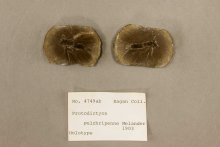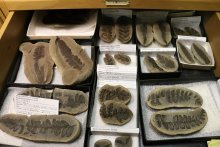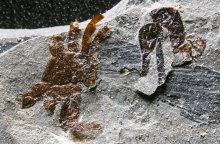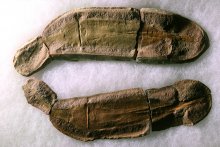The Land Emerges (320 million to 299 million years ago)
Broad expanses of land appeared in Illinois about 320 million years ago. Although this was not the first appearance of land, it was the first for which we have a rich record of land plants and animals. During this period, Illinois had a tropical climate and was a mosaic of seas, swamps, and dry land, as it was still south of the equator. The emergence of large areas of land presented new challenges and opportunities for living things. Plants and animals adapted to meet these challenges and fill new niches.
Illinois is home to a fossil site called Mazon Creek, which contains plant and animal fossils, as well as hard and soft tissue preservation. Fossils from the Mazon Creek area are found in the Francis Creek Shale in the Braidwood – Coal City area of Illinois.
This unique assemblage of fossil flora and fauna gets its name from the Mazon (pronounced Muh-zon) Creek (River) that serves as a tributary to the Illinois River in northeast Illinois. A portion of the fossil beds are now within the Braidwood State Fish and Wildlife Area, and fossil collecting is allowed by permit. Not only do the fossils help scientists reconstruct past climates and species composition in Illinois (at that time the state was located much closer to the equator), but they are also starkly beautiful.
Most fossil plants and animals from hundreds of millions of years ago were preserved in swampy lowland areas where they had the good fortune to die and be buried quickly by sediments in water. The water preserved the specimens long enough for the living tissues to be replaced by minerals or for the specimen to create an impression in the soft mud that hardened into shale or sandstone under heat and pressure.









